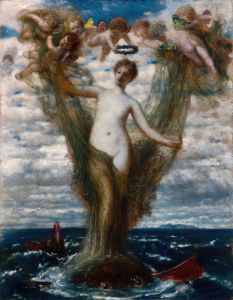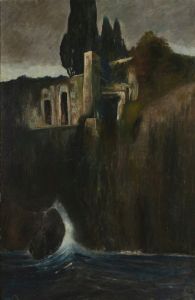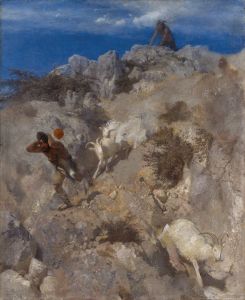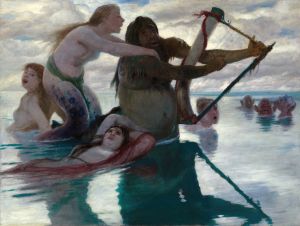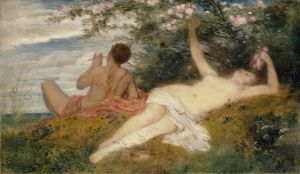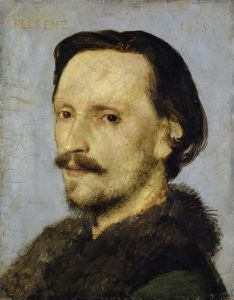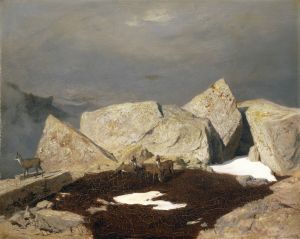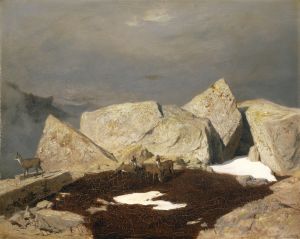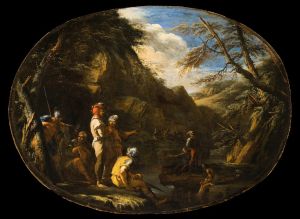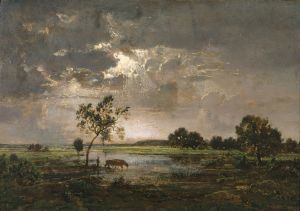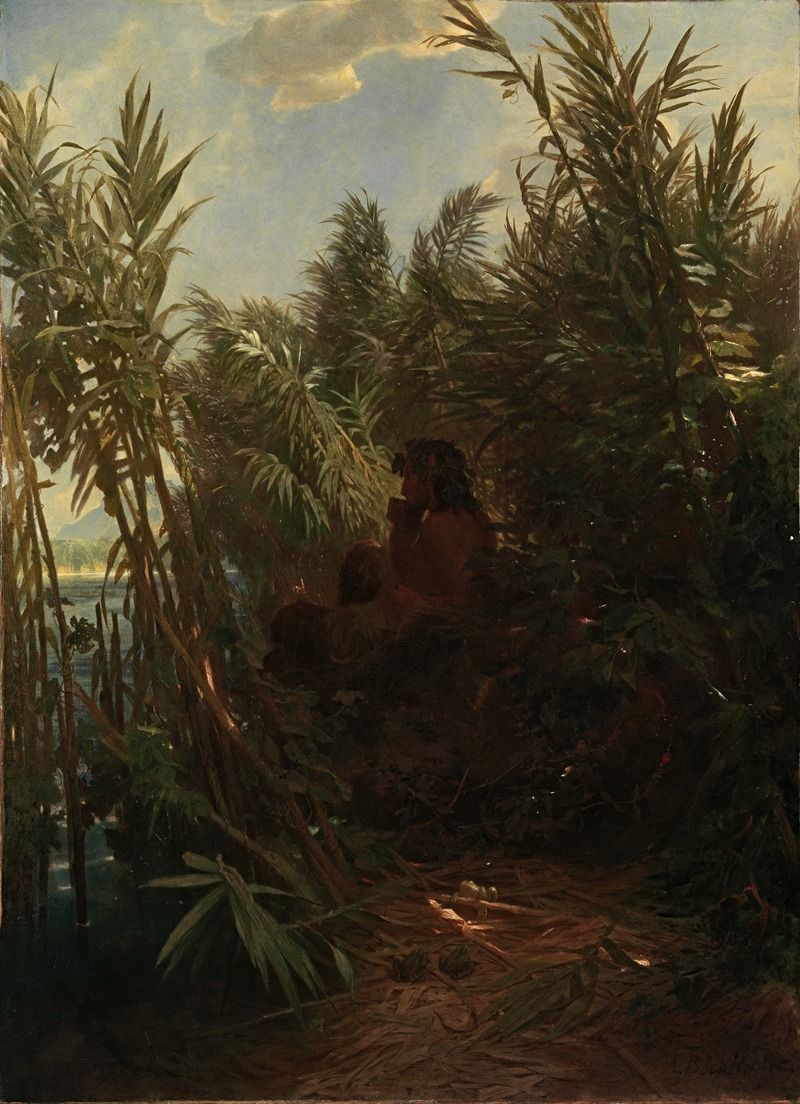
Pan in the Reed
A hand-painted replica of Arnold Böcklin’s masterpiece Pan in the Reed, meticulously crafted by professional artists to capture the true essence of the original. Each piece is created with museum-quality canvas and rare mineral pigments, carefully painted by experienced artists with delicate brushstrokes and rich, layered colors to perfectly recreate the texture of the original artwork. Unlike machine-printed reproductions, this hand-painted version brings the painting to life, infused with the artist’s emotions and skill in every stroke. Whether for personal collection or home decoration, it instantly elevates the artistic atmosphere of any space.
"Pan in the Reed" is a painting by the Swiss symbolist artist Arnold Böcklin, known for his imaginative and often fantastical works. Böcklin, born in 1827 in Basel, Switzerland, was a prominent figure in the 19th-century art scene, particularly noted for his contributions to the Symbolism movement. His works often explore themes of mythology, fantasy, and the natural world, frequently incorporating elements of the supernatural.
The painting "Pan in the Reed" features the Greek god Pan, a rustic deity associated with nature, shepherds, and flocks. Pan is often depicted in mythology as having the hindquarters, legs, and horns of a goat, similar to a faun or satyr, which are creatures of the forest. In Böcklin's portrayal, Pan is typically shown in a natural setting, emphasizing his connection to the wilderness and the untamed aspects of nature.
Böcklin's interest in mythology and the fantastical is evident in his choice of subject matter. The depiction of Pan aligns with the artist's fascination with the ancient world and its myths, which he often reimagined in his paintings. Böcklin's style is characterized by a vivid use of color and a dreamlike quality, which can be seen in "Pan in the Reed." His works often evoke a sense of mystery and otherworldliness, inviting viewers to explore the boundaries between reality and imagination.
The painting reflects Böcklin's broader artistic themes, which frequently include the interplay between humans and nature, as well as the exploration of mythological and allegorical subjects. His works are known for their rich symbolism and the ability to convey complex emotions and ideas through visual means.
Arnold Böcklin's influence extended beyond his lifetime, impacting various artists and movements in the late 19th and early 20th centuries. His work is often associated with the Symbolist movement, which sought to express ideas and emotions through symbolic imagery and themes, rather than direct representation. Böcklin's paintings, including "Pan in the Reed," are celebrated for their ability to transport viewers to a world of myth and imagination, offering a glimpse into the artist's unique vision.
Today, Böcklin's works are held in high regard and can be found in major art museums and collections around the world. His legacy as a pioneer of Symbolism and his contributions to the art world continue to be studied and appreciated by art historians and enthusiasts alike. "Pan in the Reed" remains a testament to Böcklin's skill in blending mythological themes with his distinctive artistic style, capturing the imagination of those who encounter it.






